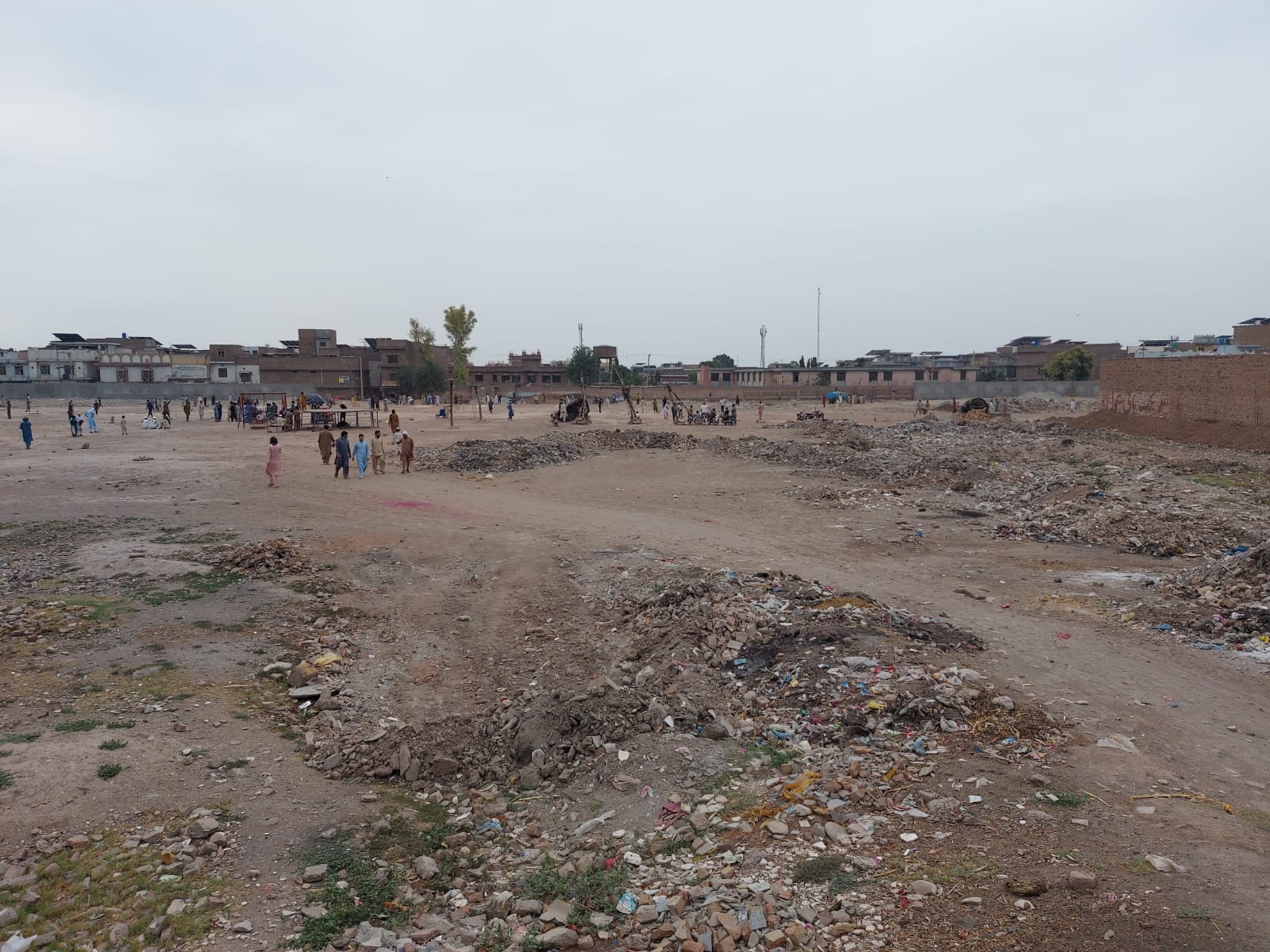
Near Superior Science College in Peshawar’s Panj Khatta Chowk, an 80-kanal piece of land has remained an empty field for the past 25 years.
Once, this area was filled with orchards of plums, apricots, and pears, surrounded by modest mud houses. Summers came and went in a natural cycle. Life was poor, but people were happy.
These are the memories of 68-year-old Farmanullah ‘Mama’ (Uncle), who has lived in the area for decades. According to him, not only did orchards thrive where now there is barren land, but both sides of the Ring Road used to be green, which helped maintain clean air and reduced the kinds of illnesses that are now common. “We had no electricity or gas back then,” he said, “but life was better.”
Also Read: Beheaded Bodies of Four, Including Peace Committee Leader, Recovered from Mardan Hills
Today, that greenery has vanished, replaced by expanding concrete structures. "Now almost every road in Peshawar is paved, gas and electricity are available, but instead of gardens and trees, we see buildings everywhere," he added. “Summers have become longer, and the songs of birds are gone. Life doesn’t feel the same anymore.”
To restore greenery and promote bird life in Peshawar, the Khyber Pakhtunkhwa government has decided to plant fruit-bearing and indigenous trees across the province. Just a few days ago, the Chief Minister issued an official letter to all administrative secretaries, commissioners, and deputy commissioners instructing them to take immediate action.
In a statement from his office, Adviser to the Chief Minister on Information, Barrister Dr. Saif, said the CM had expressed serious concern over the disappearance of native birds like the nig, myna, and hoopoe. He stated that the lack of fruit-bearing trees has forced these species to leave the region.
The letter ordered tree plantation in all government offices, residential colonies, and other public spaces. It emphasized a full-scale tree-planting campaign during the upcoming monsoon season, prioritizing medium-sized local species.
Dr. Saif added that all departments have been instructed to submit their plantation reports, and that the campaign would be carried out under a “self-help” model. He appealed to all institutions for immediate and collective implementation.
Reasons for the Decline of Greenery in Peshawar Valley and Its Effects
To further understand the issue, TNN reached out to Dr. Muhammad Nafees, Chairman of the Environmental Science Department at the University of Peshawar.
He explained that the Peshawar Valley, spanning about 7,000 square kilometers from Attock to Warsak Dam, includes major cities like Peshawar, Mardan, Charsadda, Swabi, and Nowshera. The valley is home to five prominent rivers, Kabul, Swat, Bara, Kalpani, and Jindi, which once contributed to its lush greenery.
Once known for its fertile soil and scenic beauty, the valley has in recent years faced significant environmental challenges. These include rising population, climate change, poor governance, and rapid urbanization.
Rapid Population Growth and Urbanization
According to Dr. Nafees, there has been massive population growth in Peshawar and surrounding areas, yet urban expansion has taken place without proper planning. This uncontrolled development has heavily impacted forests, while agricultural lands are shrinking to make room for housing schemes. Illegal construction along riverbanks, especially the Kabul River, has worsened the situation. Unchecked sand mining has further endangered surrounding land.
Trees continue to be cut for construction timber and household fuel. Orchards and farmland have been replaced by concrete buildings. This loss of trees has reduced natural shade, raised temperatures, and disrupted the region’s ecosystem.
He also emphasized the increasing impact of climate change. “Where average summer temperatures once hovered around 40°C, they now frequently reach 45°C,” said Dr. Nafees. This has led to environmental problems such as smog and water scarcity. The growing population, along with overuse of water resources, is accelerating the problem.
Changing rainfall patterns and extended dry spells have further dried the region. River water flow has decreased, especially in the Kabul and Swat rivers, partly due to dam construction and overuse of water in Afghanistan. Meanwhile, underground water tables are also under pressure, severely affecting trees and vegetation.
Like many other regions, the Peshawar Valley has experienced prolonged drought and intense heat waves in recent years. These conditions have contributed significantly to the valley’s loss of greenery.
In addition to environmental factors, Dr. Nafees noted that the region suffers from weak governance and lack of policy enforcement. Poor enforcement of environmental laws has allowed illegal logging and land grabbing to become common. Weak urban planning has erased green belts and parks. Inefficient water management, such as overuse of groundwater and poor irrigation methods, has degraded soil quality.
Although there has been a decline in industrial activity, existing factories still often operate without compliance with environmental regulations. Key industrial zones like Hayatabad, Rashakai, Mardan, Aman Garh (Nowshera), and Charsadda’s small industrial estates are among those cited.
Possible Solutions
According to Dr. Nafees, a large-scale forest restoration campaign is urgently needed. Indigenous tree species like shisham and keekar, along with fruit-bearing trees, should be promoted. Urban planning laws must be made stricter and fully enforced to protect remaining green spaces.
He also recommended efficient water management, including rainwater harvesting and sustainable irrigation practices. Public awareness campaigns are essential to instill environmental responsibility. Industrial expansion should only take place within strict environmental guidelines.
Dr. Nafees concluded that the decline in greenery across the Peshawar Valley is a multi-dimensional problem. Climate change is just one factor, poor policy implementation and mismanagement are equally responsible. However, he stressed that the situation is not irreversible. With timely action, sound policy, practical steps, and community participation, much of the damage can still be reversed.